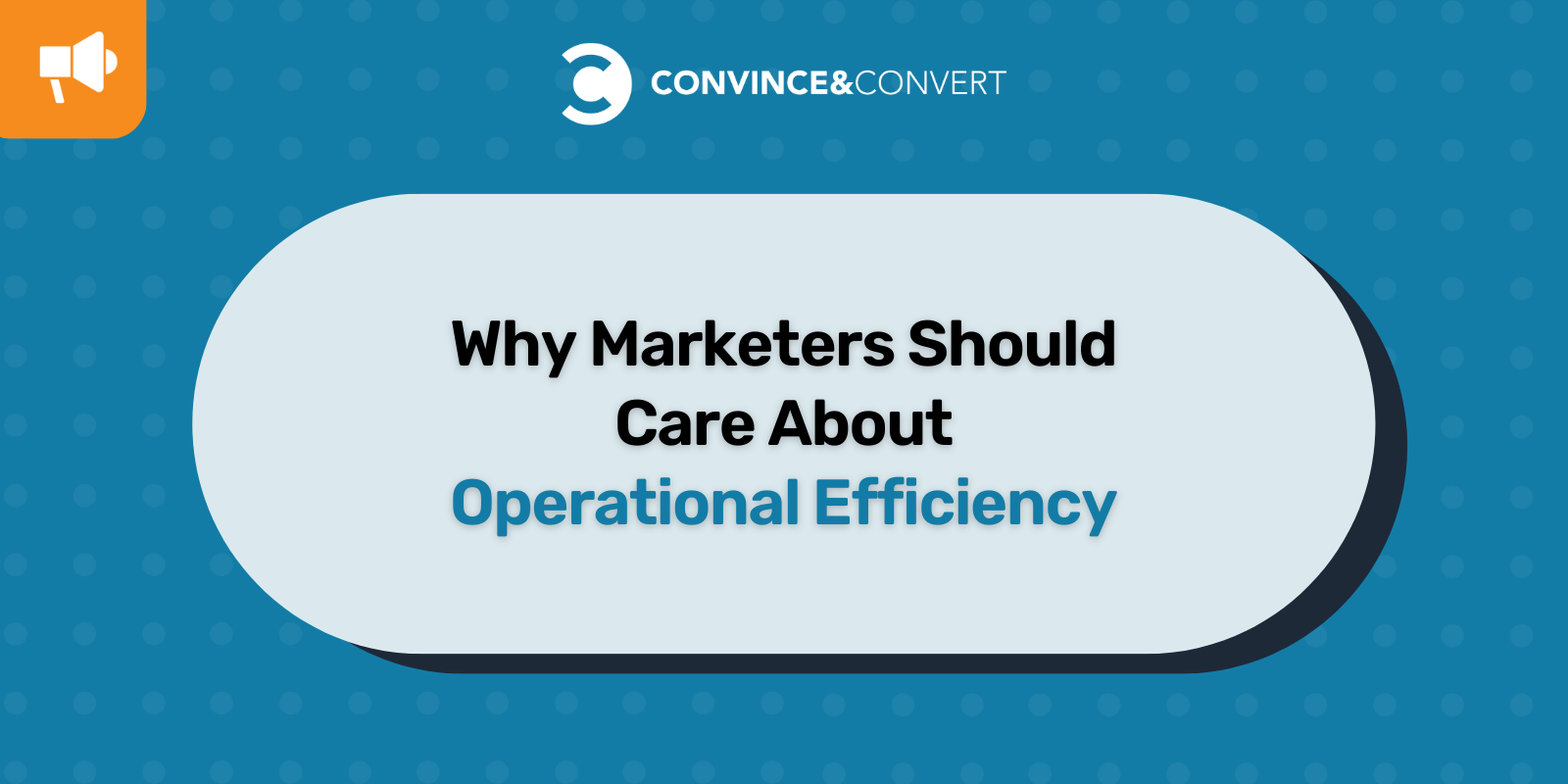 Creatives hate thinking about being efficient. It kills the mood. Crushes the vibe. Chases off the inspiration.
Creatives hate thinking about being efficient. It kills the mood. Crushes the vibe. Chases off the inspiration.
But when you’re a creative professional, you can’t rely on inspiration always being by your side. When the creative well runs dry, you still have bills to pay. Your team has to eat.
This is where operational efficiency comes in.
What is operational efficiency?
Operational efficiency is a term used to describe the effectiveness of your team’s processes and workflow. It is a way to measure how well you are utilizing resources (like time, money, and your team) to achieve specific objectives.
Efficiency usually depends on three things – the people, technology, and processes that drive day-to-day work.
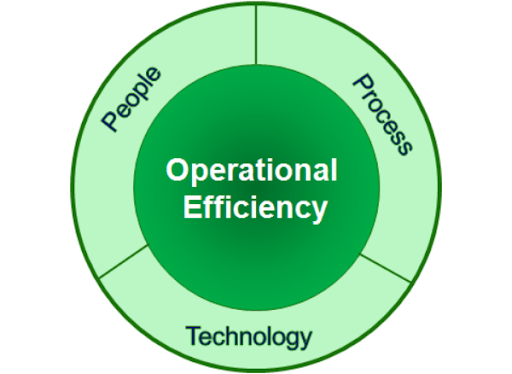
(Source: Solutions360)
Organizations prioritize operational efficiency because it both increases productivity and reduces costs. A team at maximum efficiency can produce more high-quality work faster while using fewer resources.
It’s a way of boosting the productivity and effectiveness of your team by identifying inefficiencies (i.e., bottlenecks) and streamlining processes to reduce wasted effort. By focusing on optimizing workflow, marketers can save time, money, and resources.
Why does efficiency matter?
Marketers are bombarded with tasks, from creating customer journeys to managing campaigns and running social media accounts. To get it all done in a timely manner (and with quality results), operational efficiency has to be top of mind for any marketer in charge of a team.
When you know what your team needs to get the job done, where the resources are being put to work, and where there are holes in the process, you can take control of your output and get things done without having to rely on a bolt from the blue. Be it using artistic brushes for great design, or anything else, efficiency is paramount.
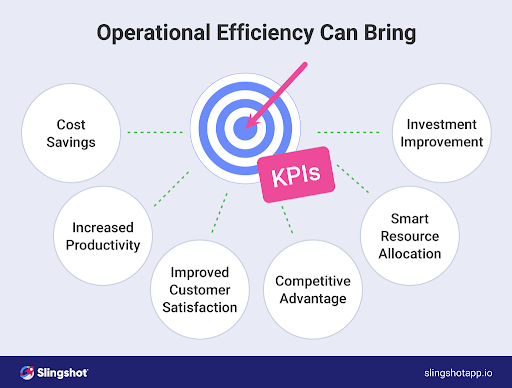
(Source: Slingshot)
Operational efficiency helps maximize resources and prioritize tasks, ensuring that your team’s skills are being put to the best use. It’s not just about departments looking for places to cut costs. It’s about creating an effective team dynamic and streamlining processes so that everyone can do their job (and have a little fun while they’re at it).
But wrangling your superstar marketers into shape can be a lot like herding cats. How can you ensure everyone is on the same page and working towards the same goal?
How to Maximize Operational Efficiency in Marketing
As I said, boosting your operational efficiency is not just about cutting costs. If you want real, sustainable efficiency, you should first…
1. Analyze your current workflow
Take a look at your current processes and see where they can be improved. Find out what is taking up the most resources, where you could eliminate redundancies, and how to create clear goals and tasks for team members. Do a thorough audit of the whole process.
Ask lots of questions and figure out where your team is stalling in the process. What resources do your team use often, and which ones do they not use at all? What part of the process is taking the most time?
From there, you can start thinking of possible solutions. For example, can you create a streamlined workflow for creating content? Can you implement standardized asset templates to streamline production processes?
2. Define your objectives
What kind of efficiency are you looking for? A vague goal of improving the current success rate isn’t helpful. You need to identify concrete objectives and goals that your team can work towards.
So think about what efficiency means to you. Does it mean higher sales numbers? Better task management? More client satisfaction? Or all of the above?
Remember that efficiency is a long game. We’re not just shooting for short-term success. Efficiency is a process, and it takes time to measure gains. Your objectives should take this into account and reflect it.
3. Define your metrics
Once you’ve decided on your goals, you have to decide how to measure them. Think carefully about what kind of metrics reflect the efficiency that you’re looking for.
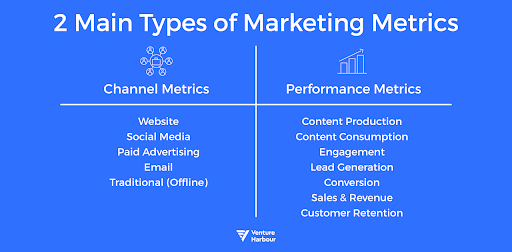
(Source: Venture Harbour)
For example, if your goal is customer re-engagement, you might look at the conversions and effectiveness of each channel. You may find that remarketing with SMS has higher conversions than email or paid ads.
Or, if your goal is to produce more content, you could look at the number of assets produced per month or the turnaround time between requests and delivery.
Your metrics should be quantifiable (e.g., revenue generated, conversion rates per channel, customer satisfaction scores). That way, you can track your progress and see if your changes have a positive effect.
4. Plan out your roadmap
Once you have your objectives and metrics, it’s time to create a plan of attack. Start by breaking down your team’s process into smaller tasks, and identify what resources they need in order to complete each task.
Think of ways that you can streamline workflows or automate certain processes. What kind of technology implementations can you make to improve efficiency? Can you provide better support or training for team members to ensure they know how to best use the available resources?
Having a clear plan to get to your goal does wonders in keeping you focused. With your goal and a map to get there, you can be more intentional with any changes you make and measure the impact of each decision, making sure that every step is taking you closer to achieving your goal.
5. Communicate your goals to your team
As with everything, communication is key.
Your team won’t be able to work towards an efficiency goal if they don’t know what it is. Make sure everyone understands the importance of operational efficiency and how it will benefit them in their roles. Communicate to them what you want to achieve, and how it affects your content calendar, and make sure that they know the expectations and the accountability around it.
Set clear expectations and hold people accountable for their part in achieving the goal. Quantifiable metrics are great for this, as you can measure progress and ensure everyone is on the same page. You can even display them in a dashboard or other visible format so that everyone can stay updated on the team’s progress.
But don’t forget to act as a team! Encourage collaboration between departments to make sure everyone is on the same page when it comes to processes, objectives, and metrics. Everyone should be clear on the role they have to play in the game plan. This way, you can ensure that everyone is working together towards the common goal.
It’s important here to be transparent with your team. They should always know the goal and understand how their efforts contribute to it. You’ll get better results when everyone is on board, so make sure that communication is a priority.
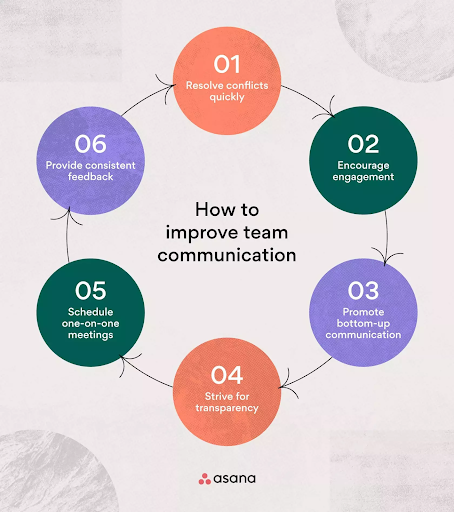
(Source: Asana)
6. Streamline complicated workflows
This is where your creative problem-solving brain can really take the stage. Take a look at your team’s workflow and see if any processes can be simplified or automated entirely. There are tonnes of AI tools for content creation, AI design tools, and workflow management out there. How can you make your team’s job easier?
Think about the tools and resources you’re already using, and figure out ways to make them more intuitive. If the software your company wants you to use is hard to learn and clunky to operate, then no one is going to want to use it. Is there a better one? Do you actually need one? Will AI marketing tools work for your team or hinder them?
You can also harness the power of standardized templates so that everyone on your team can easily access the content they need. This could be a great way to simplify complex tasks, like creating sales material or visual assets. Just having a set of customizable templates that everyone is familiar with can drastically reduce the time needed to create content.
And since keeping up to date with the trends is in itself a full-time job, make it easier on your team by having relevant content and training materials easily available. When your team has easy access to these, they won’t have to take time out of their workday to research the latest trends or study up on industry updates. Onboarding new members will also be a cinch since everything they need to know can be accessed quickly and easily. Building up a bank of reference material can drastically cut down the time it takes to get new team members up to speed, as well as save you time and money in the long run.
7. Evaluate changes
Give it some time to take effect, but make sure to assess how the changes you made are making a difference. This step is the most important one on the road toward efficiency. You’re able to see if what you’ve been doing is having the desired effect, and be able to make adjustments accordingly.
Also, don’t forget that efficiency isn’t just about speed. It’s also about quality. Are your team members still producing excellent work? If not, look into where things can be improved and how you can support them in getting back to producing the kind of work you want.
Remember, operational efficiency is an ongoing effort. You’ll need to continually evaluate and assess your strategies for improvement and make necessary changes as time goes by. It’s a recursive process that sets you on the road to continuous and steady improvement as time goes by, a process that is adaptive and robust to changes in your team.
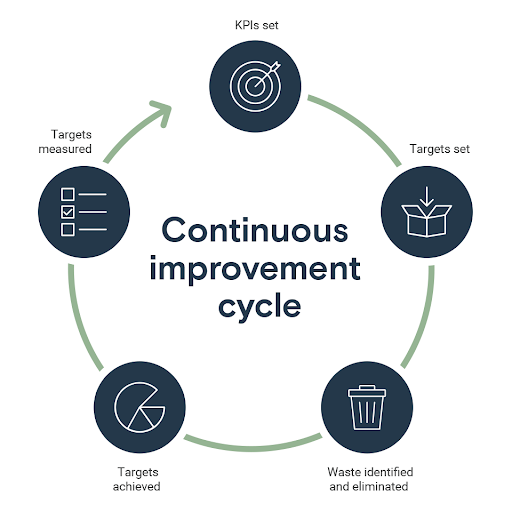
(Source: BDC)
Make sure you evaluate on a regular basis and use the data you gather to make informed decisions. Stay on top of your team’s changing needs, and be open to new ideas for achieving your goals.
Efficiency isn’t a bad word
We’ve all had it rough with bosses demanding results and innovation as if amazing marketing campaigns are just something you can get by turning a tap. It’s easy to balk at the thought of taking a closer look at our process with the goal of being more efficient. But what are we so scared of?
Becoming more informed about your process won’t kill the magic. By getting to know the ins and outs of your team, how they fail, and how they succeed, you can take control of your creativity and make sure that your hard work is worth it in the end. It’s not about results in the end, really. It’s learning to love the journey, to be the driver instead of being constantly pulled along for the ride.
So don’t be afraid to embrace efficiency. By taking a closer look at your workflow, setting measurable goals, and planning out your roadmap, you’ll get to where you need to go faster than ever before. Taking the time to optimize your processes will ultimately give you more time and freedom to focus on the creative side of marketing, and that’s something we can all get behind.
Now it’s time to take the plunge into operational efficiency! Ready? Set? Go!

